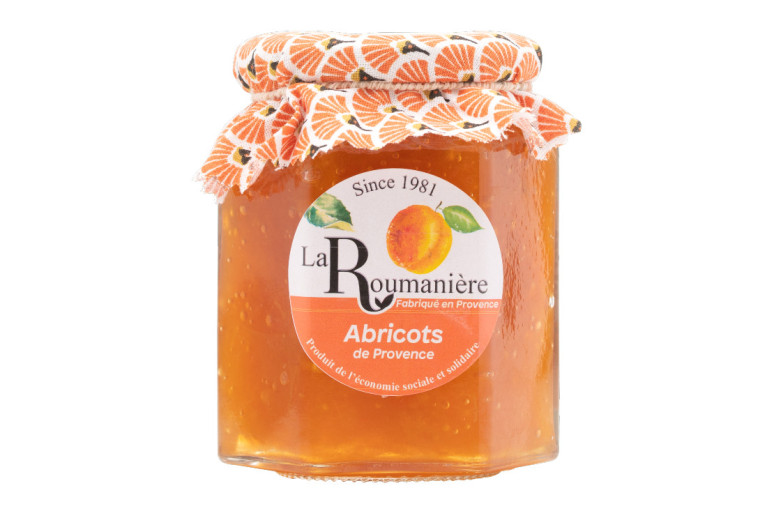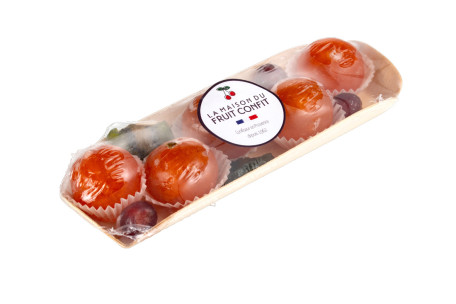Apricot Jam from Provence 335g
Delicious jam from Provence, to spread on a slice of bread or to melt with a yoghurt
Jam of Apricots from Provence
Glass jar of 335g.
Ingredients: apricots, white cane sugar. Prepared with 70g of fruits for 100g of fruits. "May contain traces of nuts".
Nutritional information (per 100g): Energy 253 Kcal / 1072 kJ; Fat 0.2g including saturated fat 0,1g; carbohydrates: 61g of which sugars 60.6g; 1.8g fibers; 0.7g protein; salt 0.01g.
Store in the refrigerator after opening.
Jam is a jelly-like mixture of sugar, pulp or puree of one or more species of fruit, obtained, most often, by reducing and candying certain fruits with an equivalent weight of sugar in a jam pan. It is a technique for preserving foodstuffs for the most fragile fruits, and it is also a way of consuming certain astringent fruits such as quince or bitter fruits such as sour orange.
Jam can be used to decorate fritters, toast, plain yoghurt, etc.
In 73 AD, Pliny the Elder in his Natural History mentions among the preserving recipes of his time the cooking of quinces in honey, of grapes candied in must, of olives candied in salt and then in margine and cooked wine, as well as of thistles candied in vinegar with honey. In the fourth century, Palladius in his treatise on agriculture De Re Rustica describes recipes for grape verjuice preserved in honey, and blackberry syrup containing honey.
During the Crusades, sugar was introduced into Europe via the Arab world, as were jams. In the Middle Ages, the term "jam" was used to describe all confectionery made from food cooked in sugar, syrup or honey: sweets, candied fruit, etc. The actual jam was called electuary, from the Latin "eleucterium", meaning "medicine to lick". Originating from the Arab pharmacopoeia, it was used as a treatment. Different recipes soon found their way into the boutehors, the last course of medieval banquets. In 1555, Nostradamus published a Traité des fardemens et confitures, which includes advice on the preparation of jams and their medicinal use.
Long considered a luxury product, jams became commonplace at the beginning of the 19th century thanks to the discovery of beet sugar. Today, they are considered a pleasure food, with little nutritional value: they contain a lot of carbohydrates and little fibre. Most of the vitamins are removed during cooking.
Translated with www.DeepL.com/Translator (free version)





























